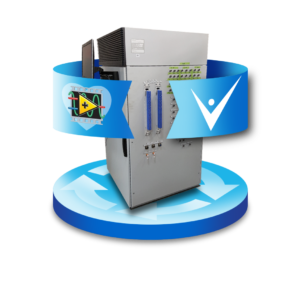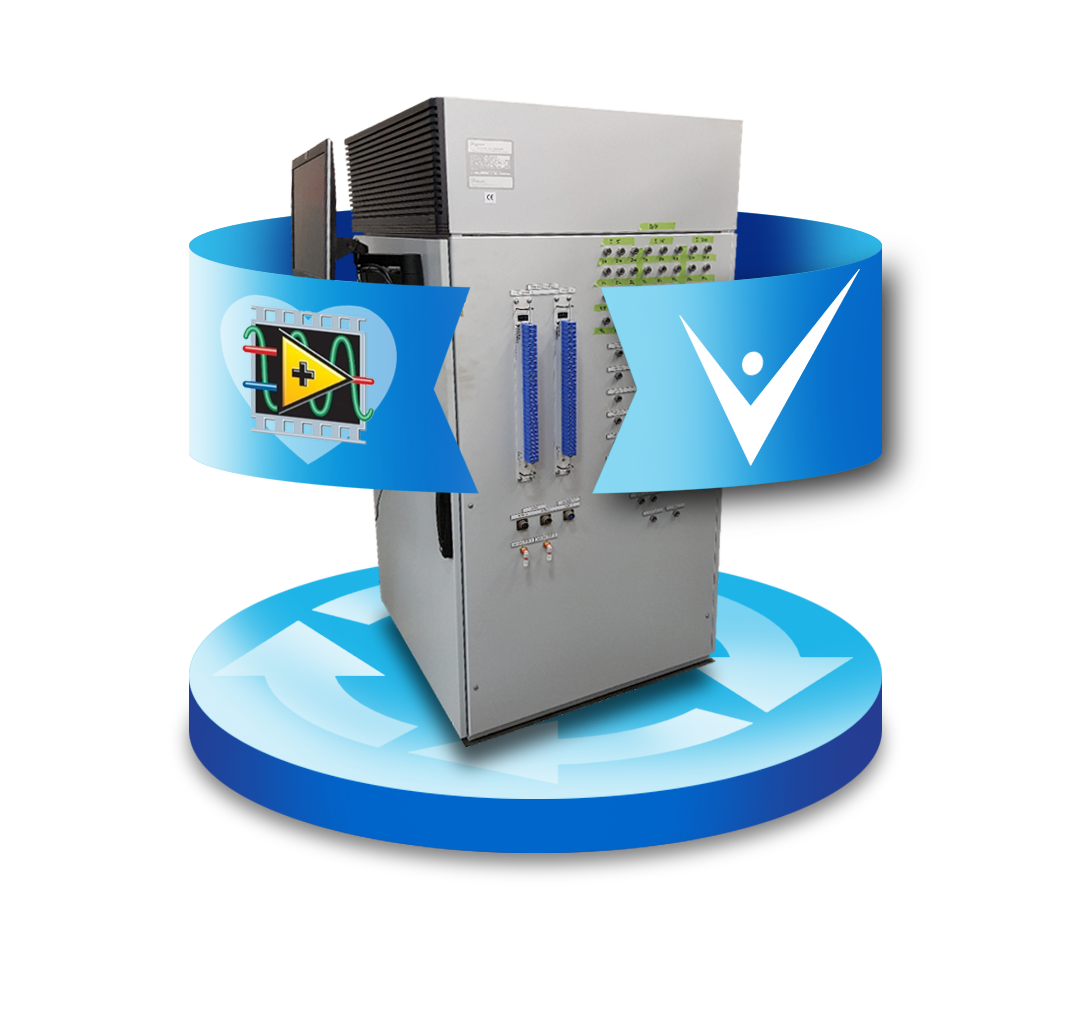
8 Reasons for Manufacturing Test Automation
In general, automation offers many benefits, such as more repeatability, less downtime, and generally lower cost of operation.
While each test case is unique, there are common reasons for test automation.
| Eight reasons for manufacturing test automation: |
|---|
| Reduce test time |
| Increase productivity |
| Decrease the incidence of manual testing errors |
| Improve repeatability and reproducibility (R&R) |
| Reduce labor costs |
| Hasten access to test results from one and many units |
| Advance sharing of results with engineering design |
| Enhance safety of people and property |
Reduce test time
Automating a test process can speed up the rate at which a part can be tested. Nevertheless, almost every test system that tests less than ~1 part every few minutes has a human operator moving parts through the test system.
Complete automation, including part handling, is usually restricted to parts being tested at rates of more than ~10 parts per minute.
See here for more:
- Improving Manufacturing Test Stations to Support Production Volume Demand Increases
- Product Validation using LabVIEW RT & LabVIEW FPGA – Electromechanical Actuator Test Stand
- Creating an N-Up Tester to handle increased production volume demands
- Increasing Test System Automation for Existing Tester to handle Production Volume Demand Increase
Increase productivity
Since some aspects of the testing are performed automatically, the operator can be performing other activities in parallel with the testing, such as:
- Part handling
- Reacting to failed parts
- Dealing with electronic or paper data sheets (sometimes called “travelers”).
See here for more:
Decrease the incidence of manual testing errors
Since computers don’t get tired or bored, less mistakes are made in the testing process or procedure than if a person performed the test.
See here for more:
- LabVIEW-based Test Executive Software | StepWise
- Improving Manufacturing Test Stations – Test Systems as Lean Manufacturing Enablers To Reduce Errors & Waste
Improve repeatability and reproducibility (R&R)
Automation removes boredom and fatigue and test results have less variability than if a human operator were involved.
Reduce labor costs
With improved productivity, more parts can be made per shift thus lowering the cost of labor on a per unit basis. Likewise, detailed measurements that can be challenging for an inexperienced operator can be shifted to the test system, thus lowering labor costs associated with training.
See here for more:
- Product Validation using LabVIEW RT & LabVIEW FPGA – Electromechanical Actuator Test Stand
- Creating an N-Up Tester to handle increased production volume demands
- Increasing Test System Automation for Existing Tester to handle Production Volume Demand Increase
Hasten access to test results from one and many units
If test results are stored as electronics records, rather than on paper, a database can be setup and searched, reducing the effort and time to find test results from one or a group of parts.
See here for more:
Advance sharing of results with engineering design
In addition to the searching capabilities, when electronic results files are placed on a shared network, the design team can review test results right away.
See here for more:
Enhance safety of people and property
If the test system performs some dangerous operations, with extreme conditions like voltage, current, pressures, temperature, and so on, the test system can manage the connections and proximity to the unit under test and reduce the chance that a person needs to be nearby. Furthermore, the test system can monitor the test conditions and unit operation to shut down and remove energy from the system in order to return to a safe state for the operator.
See here for more:
Next Steps
If you’re interested in manufacturing test automation and you’d like to chat about your needs, you can reach out here for a consultation.
If you’re deep into learning mode, check out these resources:
- Custom Automated Test System Buyers Guide
- Smart Manufacturing Test Enhancements Webinar
- Upgrading Obsolete Manufacturing Test Systems Webinar
- Hardware Product Testing Strategy – for complex or mission-critical parts & systems
- Commissioning Custom Test Equipment – process, pre-commissioning checklist, and gotchas
- How to Improve a Manual Testing Process
